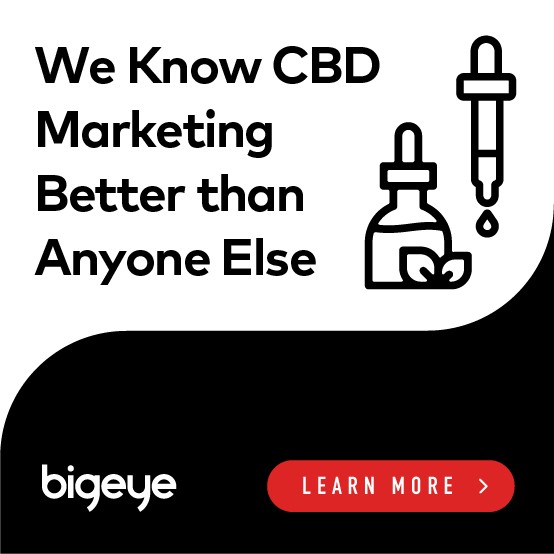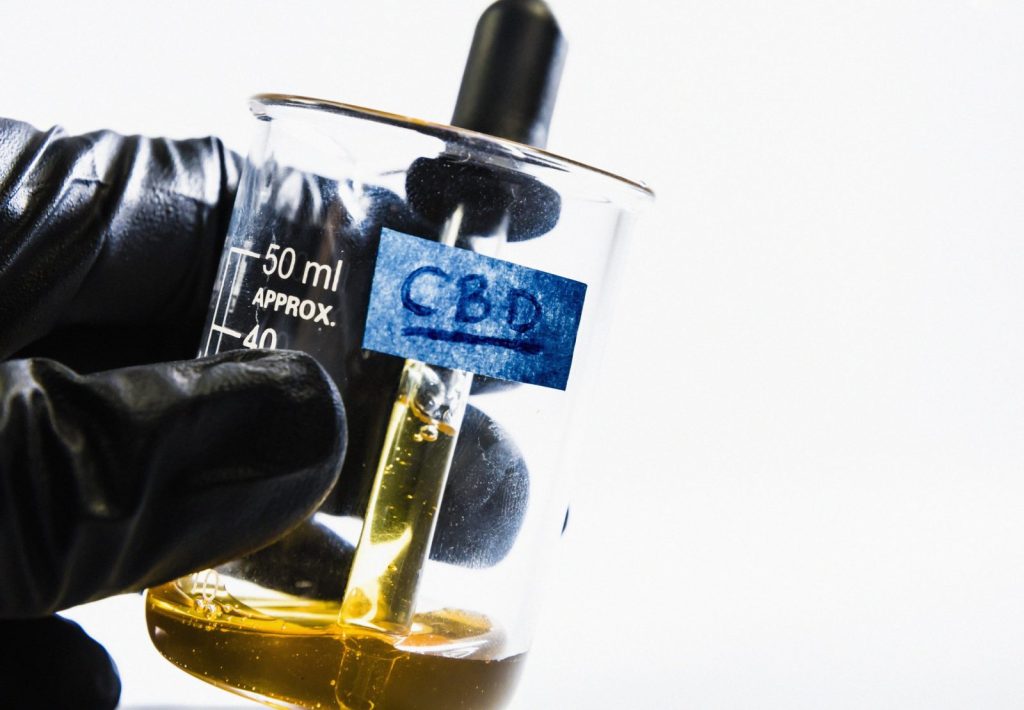
Business in the CBD space is booming — and well-capitalized competitors are entering the field. Here’s why the right CBD marketing agency can help brands win today and tomorrow.
The cannabidiol (CBD) brand category is growing faster than a weed planted in Miracle Gro — and for good reason. Public demand for CBD products has been nearly insatiable, providing enormous opportunity for early moving brands within the space. Now, however, competition is becoming much tougher, as more established companies seek to carve off their own slice of the CBD market pie. In order to win, brands need the services of a top CBD marketing agency with true domain expertise.
Let’s take a closer look at growth in the CBD market and how today’s brands can strengthen their competitive position through smart CBD product marketing.
Why CBD products have captured the public’s imagination
Within the space of a few years, CBD products have gone from a niche concern to a mainstream phenomenon. This remarkable transformation is tied to two developments. First, the 2018 Farm Bill made the production and sale of CBD products legal in all federal jurisdictions. While this opened the floodgates from a legal and regulatory perspective, there was still another piece necessary to turn CBD into such a high-growth category: Extraordinary consumer demand. This demand has been stoked by a perfect storm of market conditions and public need.
The global wellness industry has been booming in recent years, with consumers seeking to optimize how they eat, live and care for themselves. CBD products fit squarely within this category. They are non-intoxicating; they’ve been medically proven to help treat a variety of widespread health issues, and they are an all-natural alternative to pharmaceuticals or other interventions. Combine these qualities with easy accessibility, it’s no wonder that CBD is fast-approaching “gluten-free” as the next great, market-driving consumer health and wellness craze.
As the CBD space is maturing, however, competition is fast increasing. Large enterprises capable of leveraging massive economies of scale are entering the market. In order to remain as competitive as possible, it’s imperative for today’s brands to have access to high-quality CBD advertising and marketing.
A guide for effective CBD product marketing
Now is a critical time for CBD brands, as market share and customer loyalty are up for grabs in an industry that is both very young and rapidly evolving. Companies that can excel at audience acquisition and brand building during this phase will create sustainable long-term competitive advantages.
Put the right CBD advertising strategy in place today, and you’ll reap substantial benefits as the market matures.
With that in mind, let’s take a closer look at a few of the more important things to consider in the context of CBD oil marketing.
Brand story and positioning
The CBD market is growing crowded — and many of the brands in the category offer little in the way of smart differentiation. Some borrow the same tired and cliched “4/20”-style branding from the cannabis industry; others are choosing to brand their product squarely within a health and wellness context.
Your company’s brand story and positioning will play a critical role in helping you connect with the right audience. Done at a high level, your brand story tells consumers who you are. It communicates your company values. It creates an identity for consumers to connect with. Tell the right story, and consumers will want to purchase your products because your brand aligns with their own sense of self.
You can choose to create a refined brand that targets the upper end of the market. You can choose to create a trendy brand targeted at millennials and Gen Z.
Yet no matter the approach you choose, branding needs something else to be effective: A deep knowledge of your potential audience.
Audience segmentation and market research
Audience targeting is a virtual pre-requisite for success in any competitive brand category. Let’s take the example of CBD cosmetics. If you’ve created an expensive CBD oil-infused beauty treatment that’s designed to eliminate wrinkles, what does your consumer market look like?
With a few exceptions, it’s not men, so we can remove roughly 50% of consumers right away. Your product is pricey, so it probably won’t appeal to anyone earning under $40k annually, removing another sizable group of people. It’s an anti-aging product, so younger millennials and Gen Z won’t be too interested.
Suddenly your market looks much smaller — though it’s still easily large enough to target, assuming you have the right CBD advertising. The problem is this: Many advertising and marketing channels take a scattershot approach. Legacy TV ads, for example, have only the most general demographic data to guide them.
In order to get your messages to the ideal audience with laser-like precision, you need two things: Audience segmentation and tailored ad and marketing distribution.
CBD brands can acquire the first through the creation of detailed brand personas and sophisticated market research. Brand personas are demographic profiles of idealized customers: Who they are, educational status, income, family situation, their likely behavior, preferences etc. Market data can be culled from a variety of sources: customer feedback, formal surveys, data gathered from devices etc.
These approaches can then be combined with programmatic advertising that allows CBD brands to tailor their ads to certain audiences. Today, programmatic ads have grown much more powerful and refined, incorporating behavioral data, location data and other factors. For example, a CBD brand could choose to serve a Google ad to someone on a mobile device who is within a one-mile radius of that brand’s brick-and-mortar store. Or, a CBD brand could serve ads to consumers based on recent search interest or other factors.
Focusing on the health and wellness market
CBD brands have an innate advantage over many other products within the health and wellness category: Their products are backed up by hard evidence that substantiates their efficacy. Numerous studies have shown that CBD can have a positive impact on anxiety, pain, insomnia, and other critical health issues.
Given that tens of millions of Americans suffer from these maladies, this is no small market. Yet along with highlighting the very real (and all natural) benefits offered by CBD products, taking this approach has another benefit: It helps erase the remaining stigma associated with the CBD market.
Though times are quickly changing, there is some residual negativity caused by CBD’s association with cannabis. Many people are still unaware that while both products are hemp derivatives, they are wildly different in how they manifest physically. CBD is non-intoxicating and leaves a very subtle impression — no different than taking most supplements.
CBD advertising and marketing should draw this distinction. While CBD products are exploding in popularity, the public remains spottily educated in terms of CBD’s legality and its non-intoxicating nature.
Brands that help educate the public through marketing will be in a strong position to sell more products and establish long-term consumer loyalty.
Navigating a tricky advertising and marketing environment
Any CBD marketing agency will tell you the truth: Advertising your product to consumers is not the same as advertising apple juice or a new and better way to buy a mattress. This is because CBD products, while federally legal, still exist within a somewhat murky regulatory environment. Local jurisdictions have varying rules and regulations governing CBD production and transactions.
This state of affairs has had ripple effects for CBD businesses. Just like cannabis brands, CBD brands cannot advertise their products on some of the largest digital ad platforms. Google and Facebook (and by extension Instagram) do not accept digital ads from CBD brands.
While it’s very possible that this may change in the future, as regulatory clarity grows and CBD products become even more mainstream, it’s something of a hindrance today. Google and Facebook are often referred to as the “digital ad duopoly” for a reason — they control the bulk of all online advertising.
This doesn’t mean that CBD brands are entirely locked out of the digital marketing sphere, however. CBD brands can choose to advertise within smaller, industry specific digital advertising networks. While they may not have the reach or effectiveness of Google or Facebook, they are also less expensive.
Additionally, Snapchat allows CBD ads. While it may not have quite the reach of its “digital ad duopoly” competitors, it’s still a major advertising platform that is particularly well-suited for targeting younger consumers.
The takeaway
The CBD industry has experienced extraordinary growth in recent years — and it appears that we’re still in the early stages of a major new market. As Fortune 500 firms and prominent retailers begin staking their positions within the CBD space, competition will only grow fiercer.
This means that it’s essential to capture market share today, and lock in lifetime customers who are just now beginning to learn about CBD products and their myriad benefits.
At BIGEYE, we’re CBD marketing experts. Why? Because we offer a few things that other CBD product marketing agencies can’t match. First, we’ve been working with brands in the CBD space for years, and we have deep domain knowledge. Second, we’re a tech-focused marketing agency with a full suite of services. We can help you build your brand, identify and target your audience, and then harness the latest technology to deliver world-class creative campaigns.


